Apr 29, 2025
Author:Jackson Watson
Dogs experience various skin conditions just as humans do, which range from basic skin irritations and extended diseases. Such issues create negative effects that damage your pet's comfort, along with behavioral patterns and medical health status.
The knowledge of different types of skin problems in dogs remains crucial because it enables prompt treatment, which leads to lasting results.
The following guide presents detailed descriptions of 16 different dog skin issues to assist owners with symptom recognition and treatment options, and disease origin uation.
Among the most common skin problems in dogs is allergic dermatitis, resulting from animal food allergies, pollen, and irritant exposure. The condition leads to swelling and distress alongside damaging effects on the skin surface. The dog skin issues commonly grow worse because of habitual scratching or licking of affected areas.
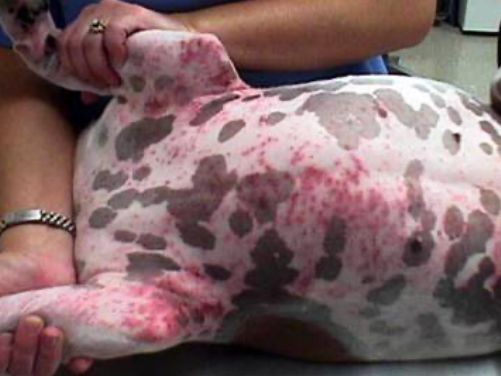
● Intense itching and redness
● Hair loss in affected areas
● Due to this condition, dogs bite, lick, and chew their skin.
Caring for this condition requires using hypoallergenic diets, dog baths containing medication, and antihistamine medications. Moreover, automatic feeders help prevent dietary triggers by delivering exact portion sizes to dogs through automatic feeding technology.
Hot spots refer to acute moist dermatitis, which produces rapidly spreading painful skin eruptions on dogs because of both infections along with excessive licking of the site. The condition affecting thick-coated or water-loving breeds tends to appear only during warmer months.

● Red, oozing skin lesions
● Hair loss in circular patches
● Foul smell and scabbing
Before treatment, veterinarians first cut the hair surrounding the region before cleaning the site, administer topical antibiotic or steroid medications to decrease swelling and infection.
The dog skin disease, mange, develops from mite invasion, which leads to the penetration of the parasite under the skin layers. Mange ranks among the most serious skin diseases in dogs. The disease causes scabs together with hair loss and persistent itchiness, which most severely affects the facial region and ear regio,n and leg area.
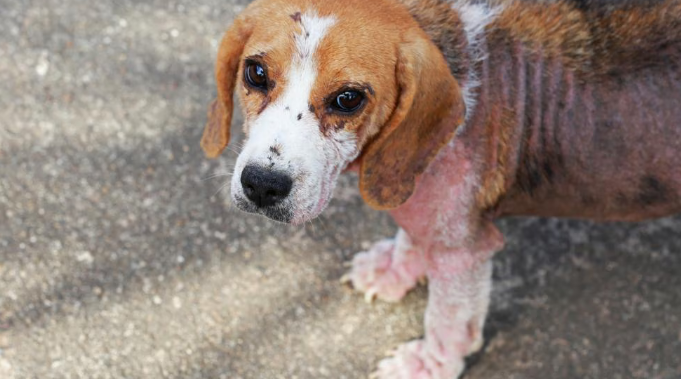
● Thick, crusted skin
● Bald patches
● Intense scratching and irritation
The treatment of mange includes topical medicated treatments along with oral parasiticidal medications and complete sanitary measures to prevent reinfection of the affected region.
Ringworm actually describes a fungal condition that produces circular areas with hair loss and scaling. This highly infectious skin disorder in dogs can transmit the disease to humans as well as other animals.
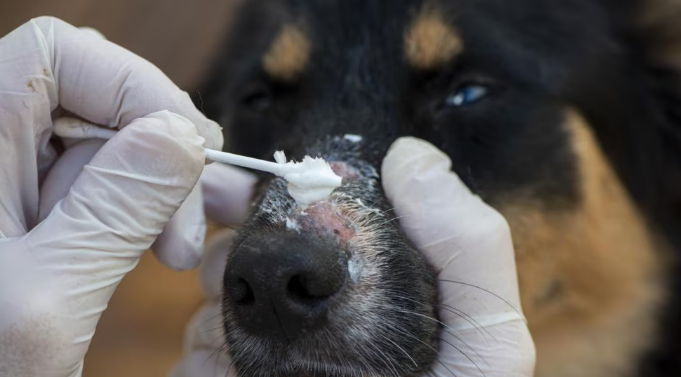
● Red, ring-shaped lesions
● Flaky or scaly skin
● Patchy hair loss
The treatment involves using antifungal shampoos along with oral medicine and also requires disinfecting all commonly shared items. A pet water fountain that provides hydration helps dogs build immunity, which promotes their recovery.
The term Pyoderma describes bacterial infections that can emerge after other dog skin issues, like allergies or insect bites. Pimples and pustules, and scabs form on dog skin that occasionally oozes or crusts.
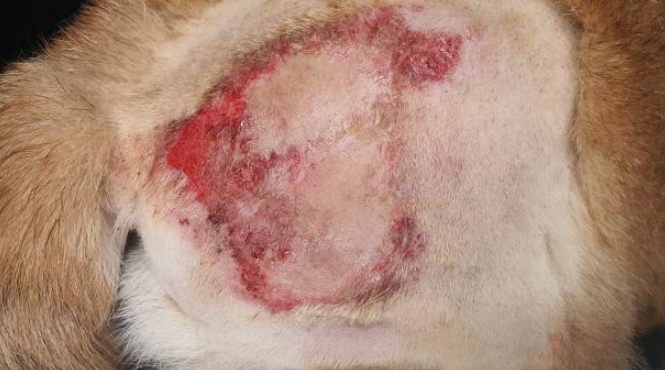
● Red bumps or pustules
● Hair thinning
● Crusty or flaky skin
Veterinary treatment requires doctors to prescribe antibiotics while recommending medicated shampoos for the condition. Understand and treat the base reasons for skin problems in dogs to stop repeated problems.
Dogs who suffer from flea allergy dermatitis experience severe irritation and intense itching from flea bites. A single flea bite quickly causes skin eruptions on dogs and rapid hair loss, which develops into scabs across the dog's body.
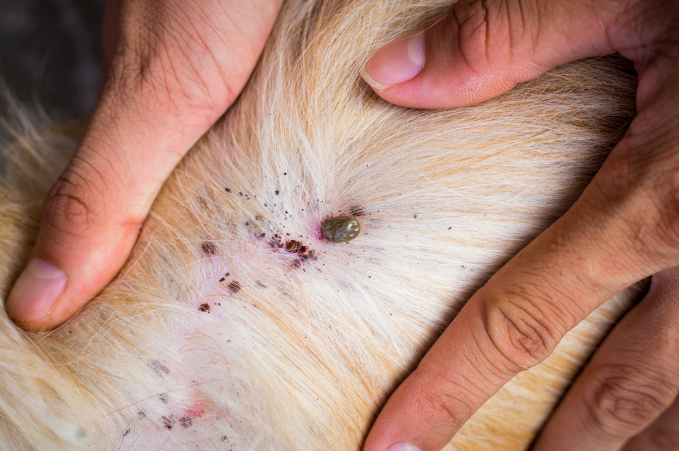
● Intense itching and hair loss
● Red, inflamed skin
● The presence of flea dirt or fleas on the coat
Controlling flea population remains essential for disease treatment, where topical medications, oral treatments, and flea collars remain viable options. An active pet water fountain keeps your dog hydrated, which supports healthy skin conditions.
Yeast infections develop in body areas such as paws, ears, and other fold areas that remain warm and moist. These skin issues in dogs appear with a musty odor and produce thick skin, which also becomes greasy.
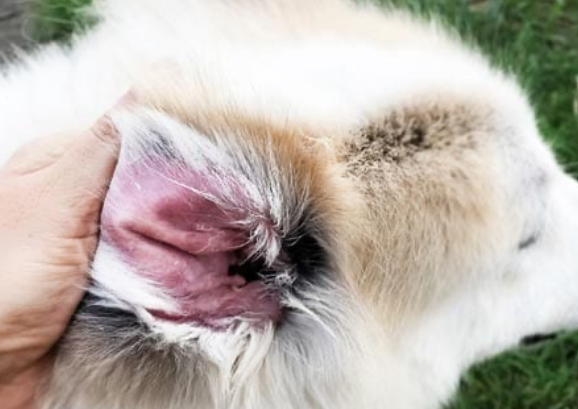
● Yellow or brown discharge from the ears
● Greasy, inflamed skin
● Foul smell and itchiness
Yeast infections commonly get treated with antifungal shampoos or oral medications. Pet owners should keep their skin healthy by frequently cleansing it and applying moisturizer to stop recurring skin problems.
Seborrhea develops into dry, cracked skin or oily, resinous skin, while it produces continuous foul odors. Chronic skin disease in dogs, like seborrhea, affects dogs and develops from biological elements such as hormone disorders.
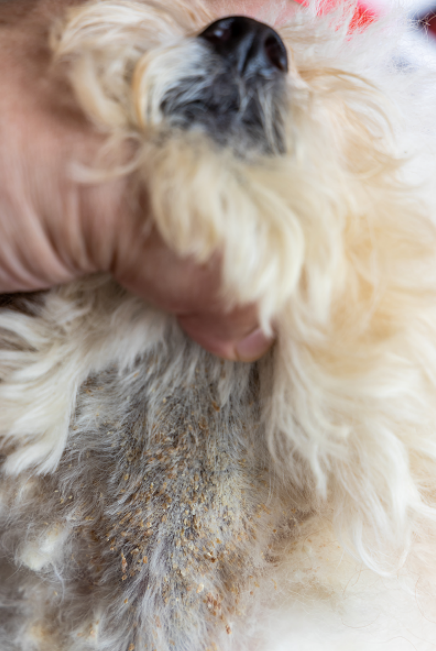
● Dry, flaky skin (dandruff-like)
● Oily patches or a greasy coat
● Strong body odor
The treatment includes medicated shampoos, moisturizing conditioners, and fatty acid supplements. Persistent control of the condition becomes possible through regular grooming sessions.
Lick granulomas develop when dogs excessively lick themselves, resulting in sores that are self-inflicted bodily injuries. These are primarily caused by anxiety, stress, or small irritating conditions. These skin disorders in dogs slowly develop into thickened and ulcerated tissue, affecting the body.
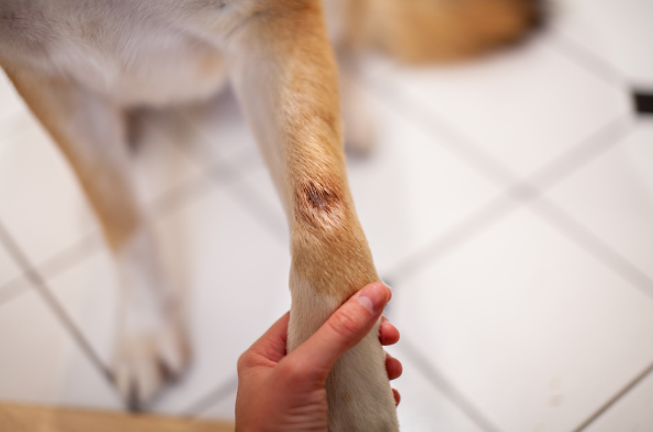
● Thick, raised, circular lesions
● Discoloration and scabbing
● Excessive licking of the area
The treatment combination of behavioral modification techniques and anxiety-reducing medications alongside automatic feeders that stimulate feeding practices will help dogs reduce their obsessive licking.
Dogs experience dandruff from dry skin that sheds flakes, just as humans do when exposed to cold weather and dehydration. Medical professionals classify these skin issues in dogs as mild, but complete neglect could trigger more dangerous issues.
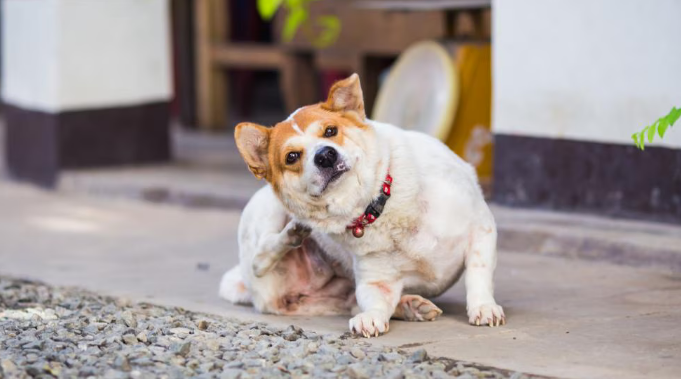
● Flaky, dry skin
● Itchiness and mild irritation
● Scaly patches on the back or neck
A combination of pet-friendly moisturizing shampoos, along with regular brushing and constant access to fresh water, will help treat dandruff and stop its recurring symptoms.
Painful sores along with rashes form in skin folds from friction combined with moisture, which causes inflammation known as intertrigo. The loose skin features of Bulldogs, alongside Pugs, make intertrigo one of the common skin problems in dogs.
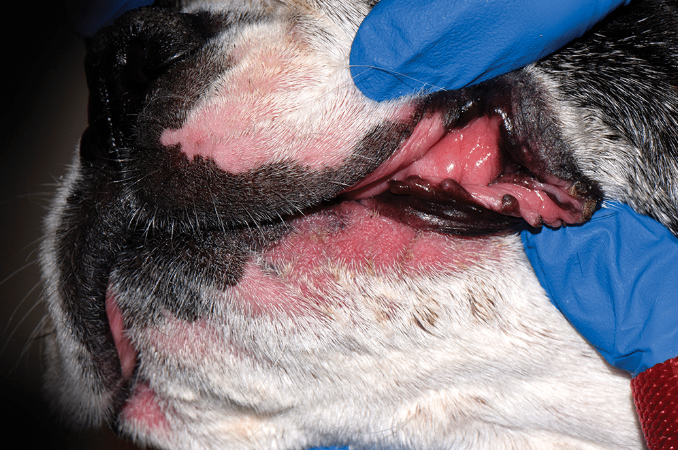
● Red, irritated skin in folds
● Moist, inflamed patches
● Odor and discomfort
The fundamental part of treating this condition consists of both dryness and cleanliness of the affected skin. To heal quickly, medical specialists recommend the use of antifungal and antibacterial creams that should be combined with proper ventilation of the treatment area.
Hypothyroidism causes a thyroid disorder that triggers hair thinning and dry skin, along with multiple skin infections. The disrupted ability of dogs to maintain a healthy coat is the reason behind many persistent dog skin problems.

● Hair thinning or hair loss
● Dry, flaky skin
● Lethargy and weight gain
Medical treatment of hypothyroidism requires thyroid hormone replacement therapy. A pet water fountain alongside proper nutritional food ensures good skin and coat condition through regular hydration.
This dermatological disorder emerges in dogs missing zinc from their diet, resulting in lesions, together with patches of dead skin and hair loss. The traits of zinc-responsive dermatosis are present in breeds like Husky and Malamute dogs, which might cause canine skin diseases in dogs if the condition remains untreated.
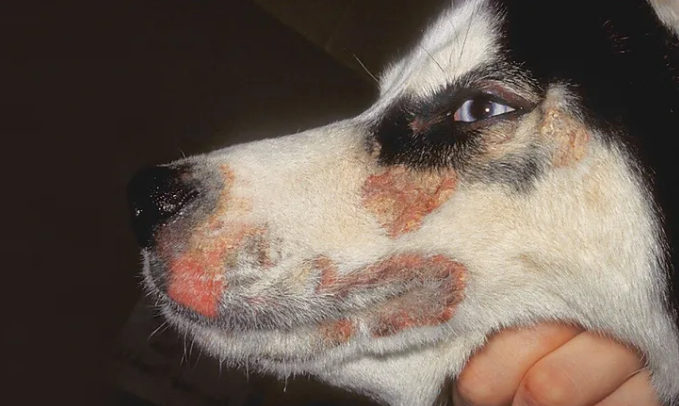
● Scaly, crusted lesions
● Hair loss on the face, feet, and legs
● Inflammation and redness
Properly treating this condition requires zinc supplements and diets rich in zinc. A dog's health condition needs regular veterinary checkups to monitor its status.
The rheumatic disease dermatomyositis affects both muscles through inflammatory processes and skin tissue by causing uncomfortable skin disorders in dogs. Dogs of particular breeds, particularly Collies, face an increased risk of developing this severe skin problem during childhood.
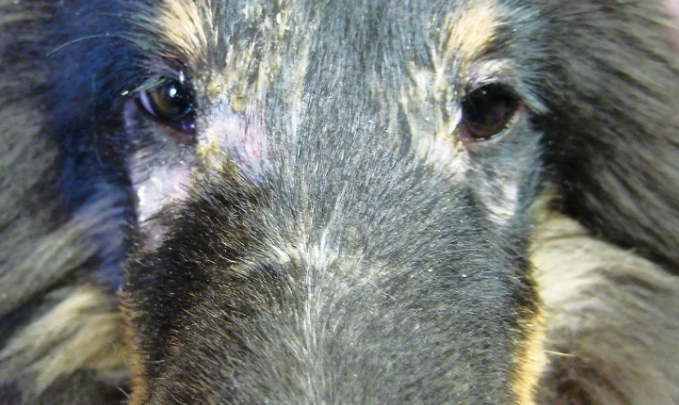
● Muscle weakness and pain
● Red or purple lesions
● Hair loss around the affected areas
The treatment consists of prescribing immunosuppressive drugs and corticosteroids for the condition. The dog needs proper medical care through balanced hydration and dietary nutrition for overall wellness.
Pemphigus foliaceus represents a distinct autoimmune disorder that induces skin attacks leading to blister formation and crusts along with lesions. Such dog skin issues require urgent veterinary intervention because of their severity.
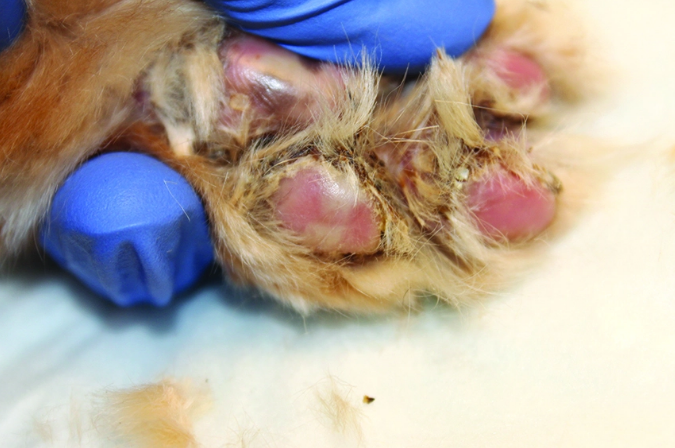
● Blisters or pustules that burst
● Crusting and scabbing
● The skin region surrounding blistered areas tends to experience hair shedding.
Medical professionals treat this disease by prescribing corticosteroids together with other immunosuppressive drugs. The patient requires continuous medical supervision along with regular checks to stop flare-ups.
Atopic dermatitis operates as an inherited condition that produces skin problems in dogs because of environmental allergies while leading to inflammation along with redness, and intense itching. Both Dalmatians and Retrievers, as well as other dogs with delicate skin, develop this condition.
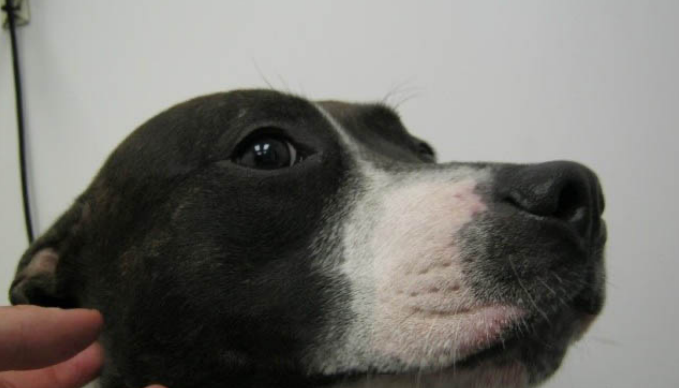
● Itchy, inflamed skin
● Redness frequently occurs on the skin around the paws, face, and ears.
● Hair loss occurs because of excessive scratching.
Medical treatment for allergies includes giving antihistamines coupled with corticosteroids, along with removing any known allergens from their environment. The proper hydration that pet water fountains provide stands as an essential element of skin health management since it avoids outbreaks.
● Bathe monthly with vet-approved shampoo
● Keep bedding clean and dry
● Use flea and tick prevention year-round
● The scheduled feeding process should run automatically through an installed feeder system.
● Prevent dehydration using a pet water fountain.
● Annual checkups
● Allergy testing
● A dog owner should get their pet tested for hormone levels if their symptoms persist over a long period.
Increased knowledge of different skin diseases in dogs allows pet owners to identify health risks before they occur. Skin health responds well to appropriate care techniques because most conditions either become manageable or preventable.
An automatic feeder and pet water fountain combined with proper nutrition give your dog the optimal foundation for vibrant skin health. Regular grooming, routine checkups, and making small modifications lead to a significant reduction in the risks of continuous dog skin problems.
Informed care practices combined with lifestyle improvements will give your dog daily relief from itch and maintain a happy, healthy coat.
Label:
Popular Post
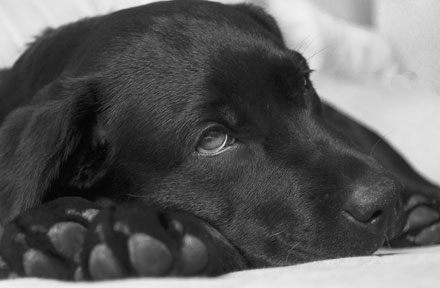
What to Feed a Sick Dog With No Appetite? [2025 Guide]
May 16, 2023
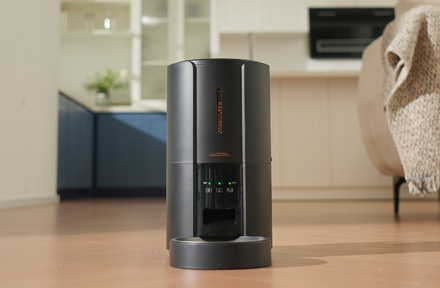
Troubleshooting Common Issues with Automatic Pet Feeders: Tips & Tricks for Pet Owners
Oct 26, 2023

Why Does My Cat Cough After Drinking Water? 8 Potential Reasons
Mar 13, 2023

My Cat Only Eats A Little at A Time - What to Do?
Feb 27, 2023
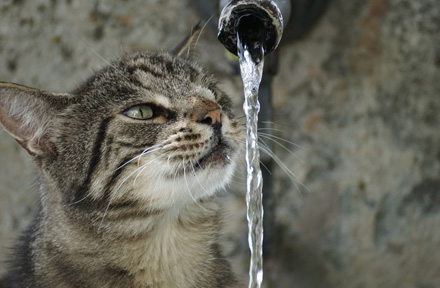
Why is My Cat Throwing up Water? Top 5 Causes Here
Feb 08, 2023
$99.99
$129.99
Copyright © 2025 WOPET. All Rights Reserved.